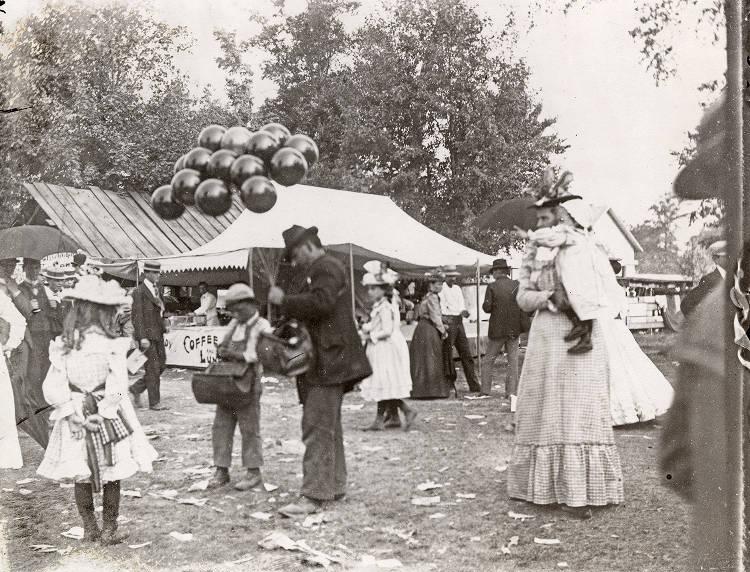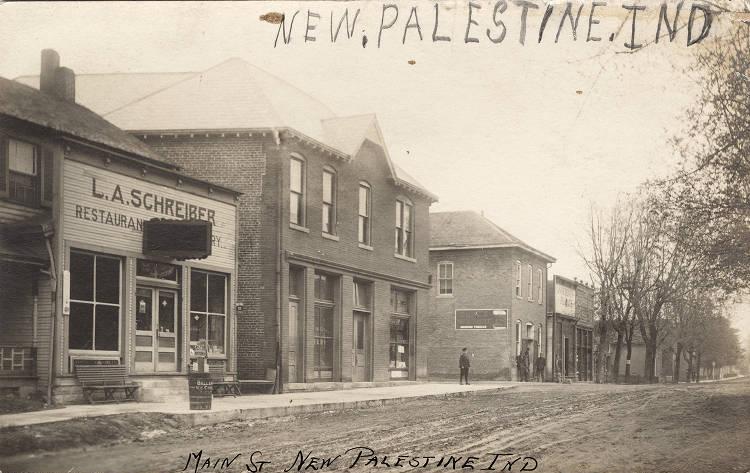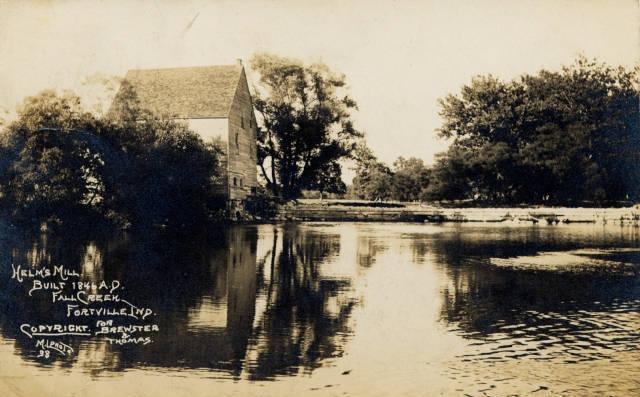Hancock County is adjacent to Indianapolis-Marion County on the east and part of the . The families of Andrew Evans, John Montgomery, and Montgomery Call settled along Blue River in what is now Hancock County around 1818. They had established farmsteads by the time the U.S. government surveyed the area in 1819. However, the county itself was not created until 1828 when it was set off from and named after John Hancock.

There were about 400 people living on scattered farmsteads throughout the county at that time. Most were Methodists, with settlers organizing a class meeting in the area by 1820. became the county seat in 1828 and has always been the largest town in Hancock County. The other early towns in the county were Fortville and .
Much of the land in the new county was low and swampy. Farmsteads were scattered on the few hills and knolls above Blue River and Sugar Creek. Gradually the county was drained by tiled ditches and made into rich farmland. Residents exported large quantities of wheat, corn, oats, hogs, cattle, and sheep, and many county residents earned extra income by feeding or boarding travelers along the . Greenfield especially benefited from the Dayton coach, a passenger coach that made weekly trips between Indianapolis and Dayton, Ohio.

The construction of railroads through Hancock County in the 1850s and 1860s spurred agricultural production and strengthened the connection between Greenfield and Indianapolis. The Indiana Central Railroad, completed in 1851, provided regular passenger service from Greenfield to the capital. Shortly after its completion, Greenfield was incorporated as a town, and, in 1876, it became a city with 2,023 residents.
Access to Indianapolis and its stores and markets improved in 1900 with the completion of the line to Greenfield. An interurban line that ran from Indianapolis to Anderson through Fortville was completed in 1901. The demise of the railroad and interurbans in the first quarter of the 20th century halted the rapid late 19th -century growth of Greenfield and Hancock County.

The county has remained predominately rural and agricultural. The growth of Indianapolis during and after World War II, however, spurred suburban development in the western part of the county, and its total population nearly tripled between 1940 and 1980. This rate slowed considerably after 1980 but picked up again after 1990. agriculture is still the county’s main economic interest, but farmland has been converted to residential subdivisions in some areas.
In 2020 Hancock County was identified by the Indiana Business Research Center as the third-fastest growing county in the state. According to census reports, Hancock County’s population grew 21.7 percent from 1990 to 2000, and 26.4 percent from 2000 to 2010 which surged the county population from 45,527 in 1990 to 70,002 in 2010. Growth slowed to 14 percent between 2010 and 2020, but the population still increased to 79,840.

The population growth has been driven by available residential construction and the perception of quality schools. Throughout the county, new and expanding housing additions have spurred growth, the majority in the northern and western parts. The three school districts in those parts, Greenfield-Central Community Schools, Community School Corporation of Southern Hancock County, and Mt. Vernon Community School Corporation have seen student population growth which required the hiring of more teachers and the construction of new school buildings. The fourth school district, Eastern Hancock School Corporation has not witnessed the same growth as the other three districts primarily due to the rural nature of the three townships from which students are drawn. Still, the school district has expanded.
The county’s most prominent industries include life sciences, manufacturing, and retail business. The largest employers are Keihin IPT Manufacturing, Covance, , Hancock Regional Hospital, Indiana Automotive Fasteners, and Beijing West Industries.
Both Greenfield and Hancock County are perhaps best known as the birthplace of Indiana poet .

Is this your community?
Do you have photos or stories?
Contribute to this page by emailing us your suggestions.